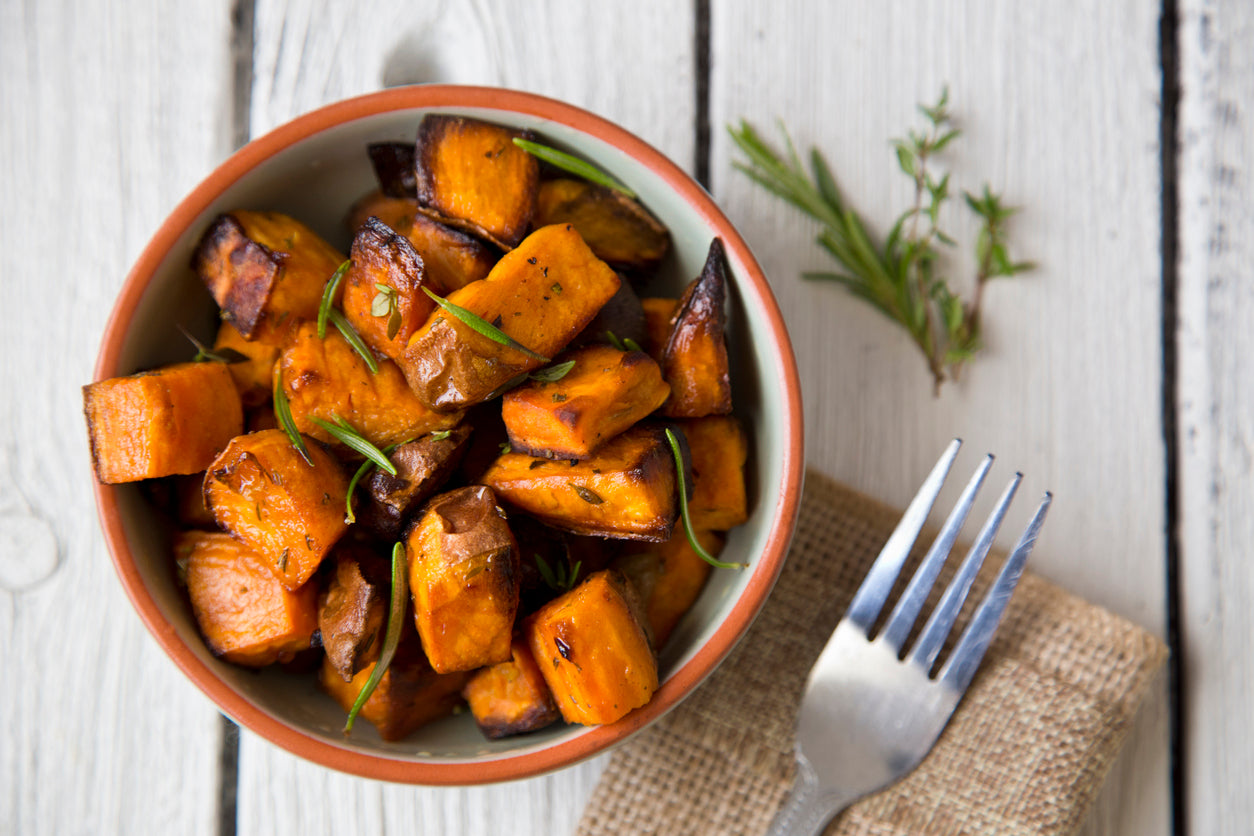“Sweet” news – how sweet potatoes support stable blood sugar, healthy vision and more

As winter plunges much of the country into the “deep freeze,” it’s only natural to seek out foods that evoke a sense of comfort, color and warmth. With their eye-catching orange or purple hues, sweet potatoes provide a blaze of cheer to a winter table, while contributing a welcome burst of essential vitamins, minerals and dietary fiber.
But, sweet potatoes – which are botanically known as Ipomoea batatas - are much more than a nutritious cold-weather food. They also contribute to optimal health in very specific ways.
Sweet potatoes help lower blood sugar
Despite their candy-sweet, indulgent flavor, sweet potatoes have a lower glycemic index than “white” potatoes - and are even believed to help regulate blood sugar and discourage after-meal blood sugar “spikes.” In addition to containing antioxidant flavonoids that promote normal blood sugar, sweet potatoes are also a good source of dietary fiber - which also helps manage blood sugar by slowing the digestion of sugars and starches. In a recent scientific review, the authors credited dietary fiber with lowering fasting blood sugar levels in diabetic patients. It’s not surprising that many natural health experts and nutritionists recommend sweet potatoes as a beneficial functional food for people with type 2 diabetes – as well as those without the condition.
Access a “smorgasbord” of nutrients and benefits with sweet potatoes
According to the US Department of Agriculture, a cup of cooked mashed sweet potatoes contains 180 calories, 4 grams of protein and a respectable 6.6 grams of fiber. Sweet potatoes are a good source of the bone-building minerals calcium, magnesium, phosphorus and potassium. They also contain vitamin K, which helps to keep calcium out of the blood and in the bones, thereby supporting both coronary and bone health. The same cup of sweet potatoes contributes over seven times the Recommended Daily Intake for vitamin A - which is crucial for immune system health – along with antioxidant vitamin C. And, a cup of sweet potatoes contains 29 percent of the RDI for vitamin B6 – needed for the conversion of food to energy – and 18 percent of the RDI for vitamin B5 (or pantothenic acid), which is needed for healthy skin and hair. Finally, sweet potatoes contribute choline, a nutrient that supports learning and memory.
Sweet potatoes protect vision
Sweet potatoes, like many yellow/orange vegetables (think: pumpkins, corn and squash) contain a pair of antioxidant compounds known as lutein and zeaxanthin. Incidentally, dark, leafy greens are also great sources of lutein and zeaxanthin, although the yellow hues are disguised by the chlorophyll in the leaves.
These natural plant pigments, or carotenoids, do much more than provide vibrant color to fruits and vegetables. Scientists say that they also help protect the cells of the retina from oxidative stress and harmful “blue light.” Researchers have determined that lutein and zeaxanthin can help to preserve and sharpen vision, while helping to ward off cataracts and macular degeneration, the leading cause of blindness in Americans over 65.
Sweet potatoes can fit seamlessly into almost any cuisine or meal plan
You can make tasty sweet potato chips or fries by simply tossing them with olive oil, sprinkling them with sea salt and roasting them. (Pro tip: using a healthy fat in preparation, such as coconut or olive oil, boosts the absorption of carotenoids). Of course, feel free to “jazz them up” with chili powder, chives, ginger, garlic, onion, cinnamon or Parmesan cheese. Sweet potatoes may also be mashed with milk or almond milk - or baked and served with yogurt, cinnamon, crushed almonds and a little honey. You can also use sweet potatoes to round out a quinoa bowl or enrich soups and stews.
For maximum antioxidant “punch,” opt for orange, deep purple or red sweet potatoes. And, rather than discarding the flavorful, nutrient-packed skins, you can snack on them.
Incidentally, even though sweet potatoes are sometimes - inaccurately - referred to as “yams,” the fact is: the plants are not related at all. While the sweet potato is related to the morning glory, yams are more closely related to lilies. (Are you confused yet?) Both, however, are tubers, meaning that they are cultivated for their nutritious, starchy underground parts.
Although sweet potatoes are particularly appealing in winter and fall, they can make a fabulous and healthful addition to your diet year-round.
Sources for this article include:
-
Posted in
anthocyanins, blood sugar, carotenoids, macular degeneration, sweet potatoes






